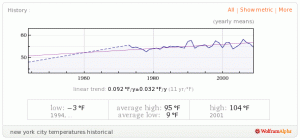I ordered a new vacuum cleaner last weekend. It’s taken several weeks of pondering and, on my part, about two hours of research combing through something like 100 different products to make the final choice. We almost bought one the weekend before, after a pop-in to our local hardware store, but I wasn’t sold on the bright red $69 “Dirt Devil” unit. Consumer Reports would bear me out on that: although it rates Dirt Devil products solidly for overall brand reliability and endurance, the vacuums themselves don’t always score well.
This process of searching, of combing through Consumer Reports and other online reviews, got me thinking about the way in which our culture fetishizes choice. This is a phenomenon that has exploded as a result of the internet: the incredible access to information, reviews, product details, and retail sources has made it possible for us all to become consumer connoisseurs, and often for items one never knew required such connoisseurship. Like vacuum cleaners. Or sheets.
If you have tried to shop for sheets lately, you know what I mean: the selection is no longer about fabric, color, pattern, and possibly brand name. It’s now also about thread count, trim style, and the origin of the fabric—nearly twice as many factors. I have bought sheets more than a few times in my life, but prior to the internet I do not recall debates over thread count entering into the equation, or of having such attention drawn to the grow spot for the cotton. Can any of us really tell the difference between sheets with a thread count of 500 versus 600, particularly after they’ve been through the wash a few times?
I’m not trying to do a Grumpy Old Man schtick here—I like the degree to which our choices have increased, and our ability to shop around for and price out products so effectively. But I think we have surpassed the mere offering of a wider selection of products at different prices, glorious though that is.
In researching the vacuum, much was made not only of HEPA filters (to catch dust particles) but also noise reduction. Silly me, I just assumed that vacuums were noisy! If the machine uses bags (as opposed to re-usable canisters), there are a variety of vacuum bag options: some do an extra-good job at trapping dust along with dirt—which seems to me the sort of bag you want want as standard, not as an add-on. For the model I purchased, there are actually two different kind of higher-quality bags, one of which is branded “Clinic,” as if to convey that its dirt-and-dust-trapping would pass muster in a hospital. And there’s even a vacuum (same brand, same model as the one I purchased) made from recycled plastic. It’s tagged as “Green,” though this misleadingly implies there’s something greener about how it works, as opposed to how it was made.
Again, this is not to say that choice is bad, or even to argue that the wide selection of products and services is overwhelming. Others have made—or skewered—this argument, and I tend to side with the (pardon the pun) pro-choice folks. I am not too concerned about the overwhelming options, or the diverse range of products one can choose from in different categories; I tend to think this should be celebrated, and the internet hailed as the liberator. If it sometimes requires more work, more time, and more thought for what might seem like a simple decision, we are still better off as individuals and as a society. At the same time, the internet has enabled us to fixate on standards that sometimes seem more illusory than real—the kind of standards that were once limited to the small segment of people who could afford to worry about such distinctions.
Often, it does not feel like a kind of Consumer Democracy, but rather just a Consumer Absurdistan: a place where we make choices based on factors that have a stronger psychological draw than a practical one, and where such decisions may not satisfy either our actual or our metaphysical needs.




